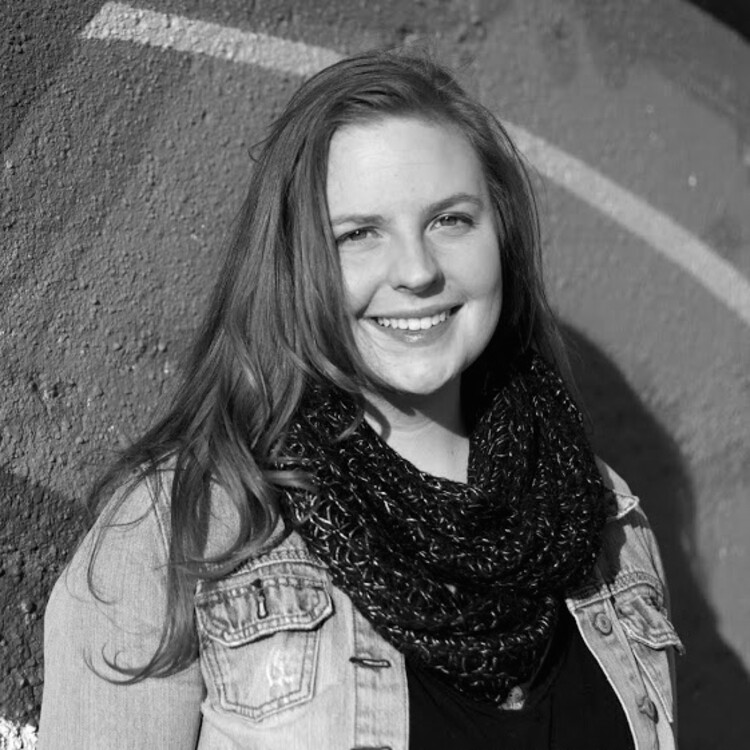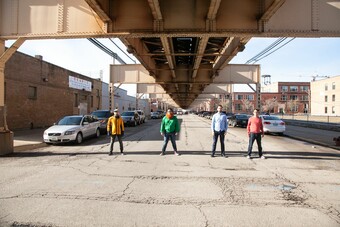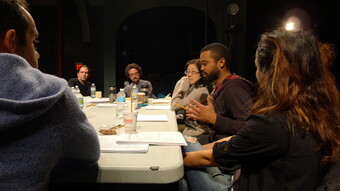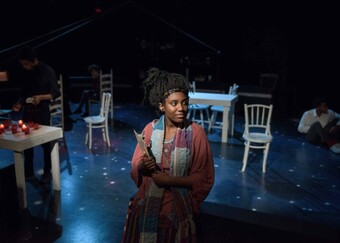Chicago’s Theater By, With, and For Young Audiences
Looking Back and Moving Forward
A series that explores youth ensembles in Chicagoland, the communities that encourage them, and how young people create theater for young people.
And shall we just carelessly allow children to hear any casual tales which may be devised by casual persons, and to receive into their minds ideas for the most part the very opposite of those which we should wish them to have when they are grown up?—Plato, 380 B.C.
Theatre for Young Audiences (TYA) has a rich and varied history spanning global traditions rooted in entertainment, education and the fostering of imaginations. Yet TYA in the western world is deeply rooted in the social and cultural acceptance of youth as a group in need of control, protection and didactic cultivation. Centuries of prejudice have resulted in dividing professional and amateur theater on the basis of age—underpinned by images of young people as less than capable beings. When TYA is written off as less than, are we watching the effects of adultism materialize to shield projected innocence? If we are going to allow children to hear just “any tale” as Plato wrote, what better story to hear than one created by their peers?
The TYA branch of theater for, by and with young people offers a rare intersection of authorship, representation and inverted hierarchies. When the lack of youth voices in the creation of theater for youth is accepted as normal, a power structure thrives that creates theater by, with, and pleasing to adults. What happens when youth write, perform, and even produce their own work, causing the usual gatekeepers to take a backseat? Through the exploration of several youth ensembles in the Chicago TYA hub, this series will aim to explore the dynamic relationship between the fearless young people at the helm of these ensembles, and the ways in which the theater community can advocate for the theatrical work of youth.
Young people have been fundamental in Western theater for as long as historical archiving has existed. Youth acted in the commedia tales of travelling storytellers, learned from the sixteenth century Jesuit theater programs and performed in the common theater of circuses, vaudeville, and sideshows of the nineteenth century. The emergence of the “child star” in the following century led to an unprecedented boom in popularity of fairytales and literary adaptations for youth, as record numbers of such shows found critical and financial success in New York.
The sustained growth of urbanization in the twentieth-century brought about shifting societal views of humanitarianism, and children were no longer viewed as property but as innocents in need of safekeeping. The performance space itself followed suit and molded into the formal entity we know today, discouraging youth attendance and instead opening its doors to those able to pass the necessary socio-economic barriers, including age. The role of exposing young audiences to theater had fallen mainly to educators.
Chicago circumvented this phenomenon with the arrival of the settlement movement and Jane Addams’ Hull House—a place to meet, socialize and learn for immigrants of different communities in the late nineteenth century. The settlement houses were placed in communities with predominantly immigrant populations, creating a need for theatrical events able to communicate through universal values. Hull House offered many social services—the most visible and influential being theater initiatives tailored toward youth. The programs brought together the multiethnic community of Chicago and spurred a powerful tradition of community engagement and activism through the arts that is still present today. Addams believed in the power of youth theater as “a reconstructing and reorganizing agent of accepted moral truths,” guiding Chicago youth to question the present and envision the potential of the future.
Chicago’s branch of the Association of Junior Leagues of America, created in 1924, further progressed TYA’s stronghold in Chicago. No other league in the US embraced children’s theater as enthusiastically as the Chicago League. The organization produced full seasons of plays for young audiences and went on to organize national children’s theater conferences, establish manuscript libraries, sponsor professional children’s theater companies, and license children’s theater productions through much of the twentieth century.
Chicago continues to serve as a haven for groundbreaking, socially motivated TYA work. Youth ensembles write and perform in shows all over Chicago, from the south side to the north and west and everywhere in between. Productions like The Young Fugitives’ Cold Summer incited censorship from the Mayor’s office while Albany Park Theatre Project’s latest, God’s Work headed downtown to perform at the Goodman for sold out crowds. When students are able to perform in these professional settings and create from personal experience and belief, they construct and assert their identities at crucial stages of development. And when young audiences see individuals who look and speak like them on stage, the impossible stories they witness seem more possible. As studies continue to prove the benefits of fostering the ideals of encouragement, sympathy and empathy at a young age, it is imperative young people connect to a performance.
The TYA model resists being placed into a singular box. As audiences, creators and critics struggle to define what constitutes TYA, the most intersecting faction of all is theater for young audiences, by young audiences. This series will aim to explore the institutions, ensembles and youth in Chicago exemplifying this theatrical activism. Jane Addams viewed plays “not only as an agent of recreation and education, but as a vehicle of self-expression for the teeming young life all about us.” Championing the theatrical work of youth is essential in how we define our theater circles as community, and honor a multigenerational collective experience.
If the theater community sees theater as a living tool to enact change through action, then isn’t it about time we stand with the theater makers directly in line to change the world and listen to what they have to say?
Up first: About Face Theatre’s Youth Ensemble








Comments
The article is just the start of the conversation—we want to know what you think about this subject, too! HowlRound is a space for knowledge-sharing, and we welcome spirited, thoughtful, and on-topic dialogue. Find our full comments policy here
This is great! Chicago does so much for kids of all ages when it comes to theater! and almost all of it is out of school time.
Very glad that HowlRound is publishing this series. It's time we challenge Chicago's oppressors in power whose influence is really never discussed. The young have the strength, not the power -- and the former matters much more than the latter. Morgan, I look forward to you letting us hear the voices of these young artists, who are too often spoken for by their own oppressors with the illogical sense they can speak for them.
WONDERFUL! I can't wait!